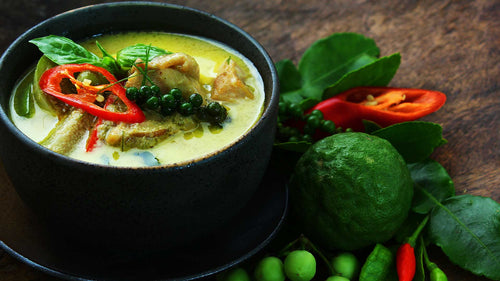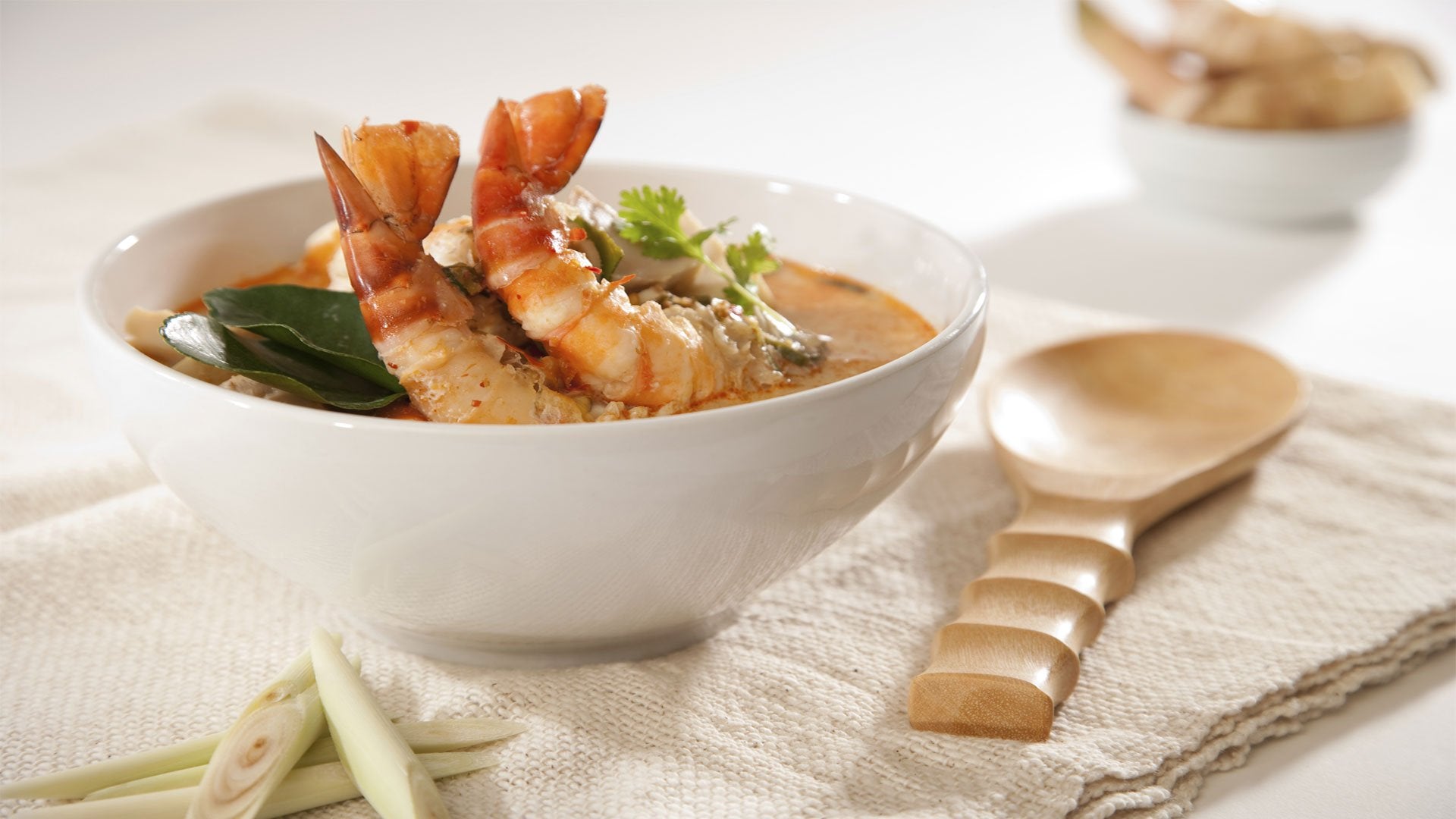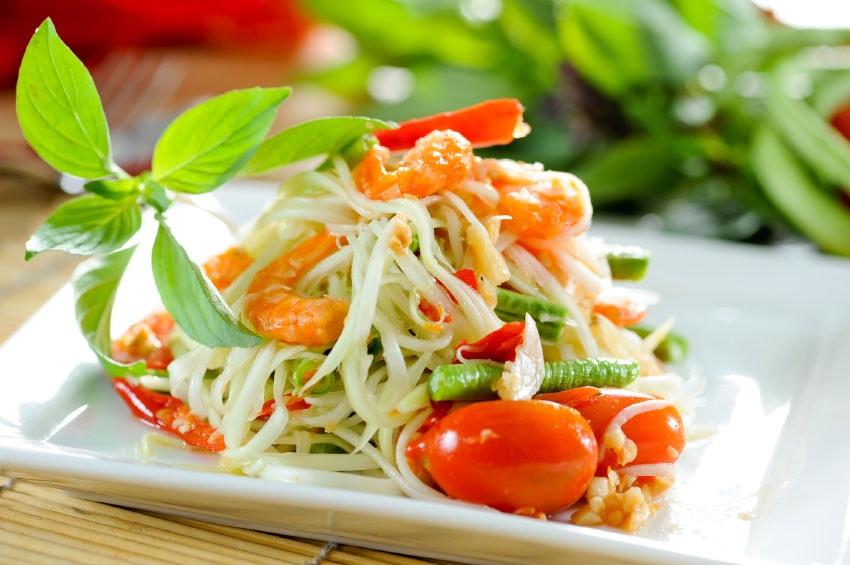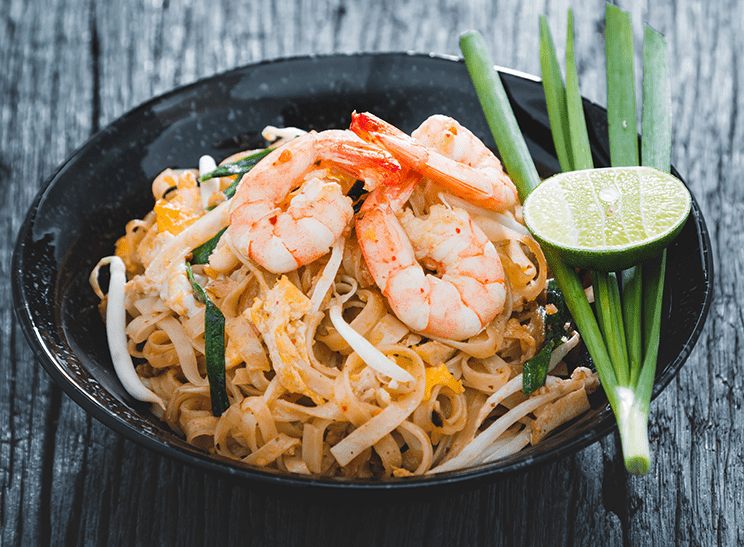What is Thai basil?
Thai basil is exactly that. Basil. At least, it’s one type or variation of many existing basil varieties. Thai basil is a staple ingredient in savoury Thai cuisine and is used wisely across many other Southeast Asian countries. Hence, this herb is commonly found in Asian supermarkets as opposed to being readily available in chain Western supermarkets.
How is Thai basil different from regular (Genovese) basil?
Genovese basil is the plant name for the most commonly used type of basil in western cooking. Thai sweet basil is quite different in appearance to typical Genovese basil. It has a more solid stem, and thus the herb branches are often sturdier while regular basil is more delicate. Its leaves are a bright green colour, similar in hue to Genovese basil. However, Thai basil leaves are more narrow and tapered in shape with slightly more serrated or jagged edges. Both plants have varying sizes of herb leaves, although Thai basil leaves generally tend to be smaller than common basil leaves.
In terms of cooking, Thai sweet basil is known for being more stable and able to endure high temperatures for extended cooking periods in comparison to Genovese basil. You can observe these characteristics in the kind of recipes each type of basil is commonly used for. For example, Thai sweet basil can be used in spicy Thai curries and stir fries while Genovese basil is often placed into recipes after or towards the end of the cooking process or in cold dishes such as pesto or salads and even desserts such as cheesecake.
So what is similar about these two types of basil?
Well, in true basil nature, both are pungent with distinguishable aromas. That’s about it when it comes to similarities.
The smell of Thai basil can be likened to that of anise or an ever so subtle alcoholic ‘sambuca’ scent. It’s aroma is strong and spicy, complimenting other commonly used ingredients in Southeast Asian cooking and recipes. While regular Genovese basil is just as aromatic with a seemingly milder but equally strong smell, except its scent isn’t so spicy but rather is more peppery with sweeter aroma.
How does Thai basil taste?
When compared to Genovese basil, Thai basil is distinctly savoury. Its anise scent translates into its flavour to give a liquorice-esque taste with hints of spiciness. Because of this, it’s safe to say that these two types of basil are not to be used interchangeably. Thai basil is best suited to recipes and meals which are bolder and punchier in flavour than regular basil, and is less suited to sweet recipes such as cheesecake desserts.
What is Thai basil used for? What can I do with too much Thai basil?
Thai basil is commonly sold in large portions compared to typical basil and because of this, cooks often find themselves unsure what to do with the excess quantities of the herb. It would definitely be a shame to waste so much delicious flavour, so what can you do with too much Thai basil?
Marinade Meat
Like many other herbs, Thai basil is great for marinating meats. Using either a pestle and mortar or food processor, you can make a basic marinade by mixing Thai basil with your choice of oil, vinegar/lemon juice/wine, garlic and a sprinkle of salt and pepper to taste. If you’ve got a really big quantity of basil, you could even marinade a bulk of meats and freeze them to cook at a later date.
Flavouring Plain Rice
In a similar way to how Indian cuisine utilised bay leaves to add flavour to recipes such as curries, Thai basil can also be used to add some more flavour to blander foods and ingredients such as plain rice. You can either add whole leaves near the end of the rice cooking process to infuse the aroma of the Thai basil into the rice, or alternatively chop Thai basil into small diced pieces or for ease, use a food processor and boil the basil with the rice or fry it into fried rice.
Cocktails
Thai basil makes for a unique and refreshing flavour to add to cocktails to give drinkers a punchy surprise. Pairing well with cucumber, limes and lemons, there are a range of cocktails you could experiment with using Thai basil from Mojitos to Martinis. Get your cocktails recipes out and get creative!
Thai and Southeast Asian Recipes
This might seem obvious, but you would be surprised how many people overlook the obvious. If you find yourself with an overwhelming amount of Thai basil, why not try experimenting with different Thai and Southeast Asian recipes you haven’t tried before? If you’re a Thai curry connoisseur, why not try Pad Thai, if you’re an expert with Southeast Asian noodles, why not try rice dishes? With Asian cuisine, you can always find a way to incorporate Thai basil into your recipes.
Garnish Recipes
Last but not least, Thai basil can be used to simply garnish other recipes. Elevate your everyday home cooking and present your favourite dishes with a fresh piece of Thai basil to add colour, aroma and décor to your cooking.
How to Store and Preserve Thai Basil
Now that you know the difference between Thai basil and regular basil, what Thai basil tastes like and how to use it, the final thing you should know is the best way to store and preserve the herb.
Due to the strong, sturdy stem, it is common practice to store the herb much like fresh flowers by cutting the ends off and placing Thai basil in a glass of water. Alternatively, Thai basil can be stored in the fridge, only when wrapped in plastic and will stay fresh for up to a week. Another option is to freeze Thai basil in ice cube trays of water with a little oil in a similar way to herbs like rosemary or thyme.











Leave a comment